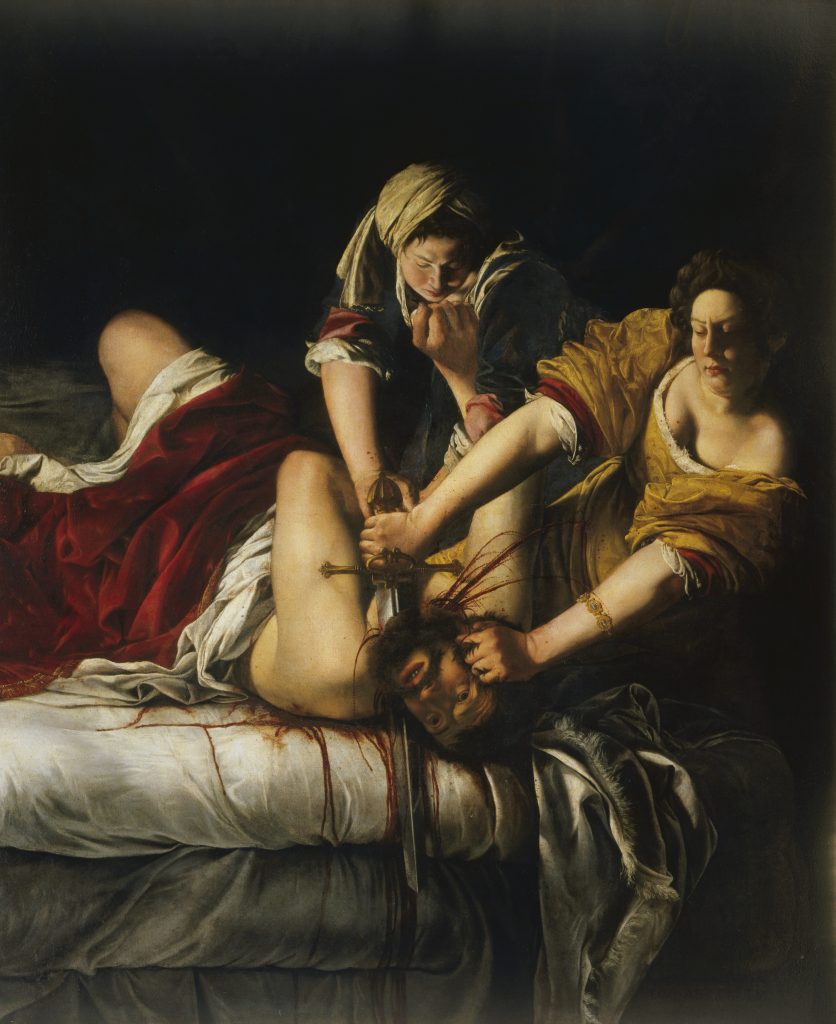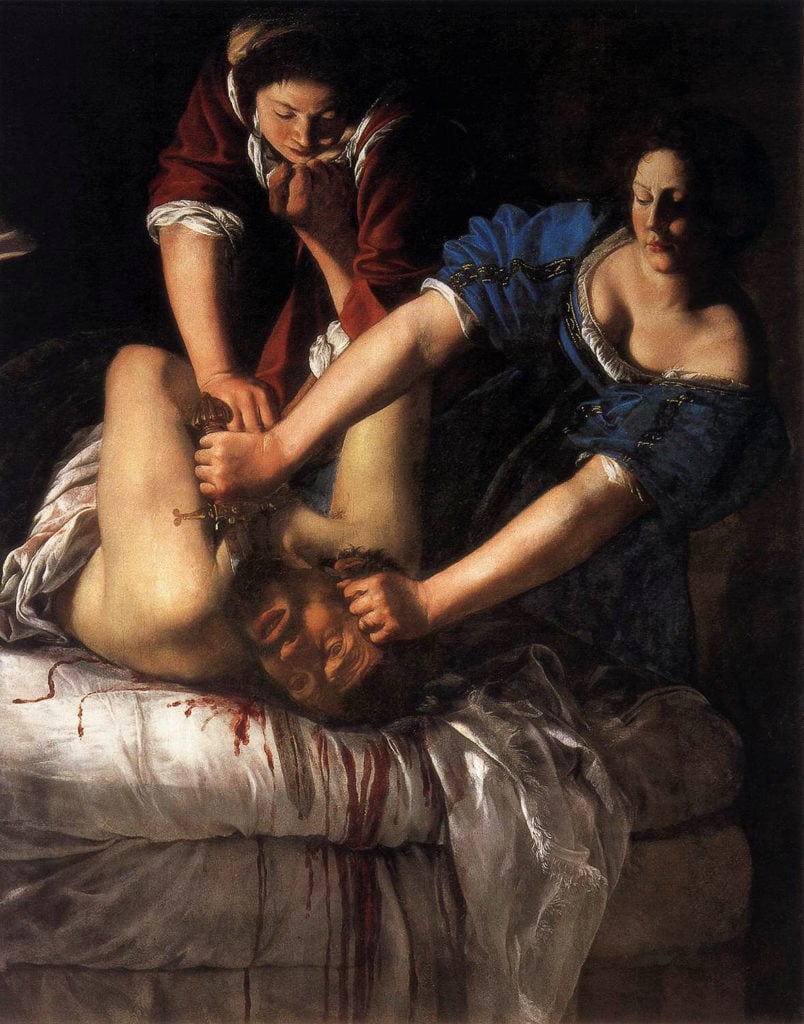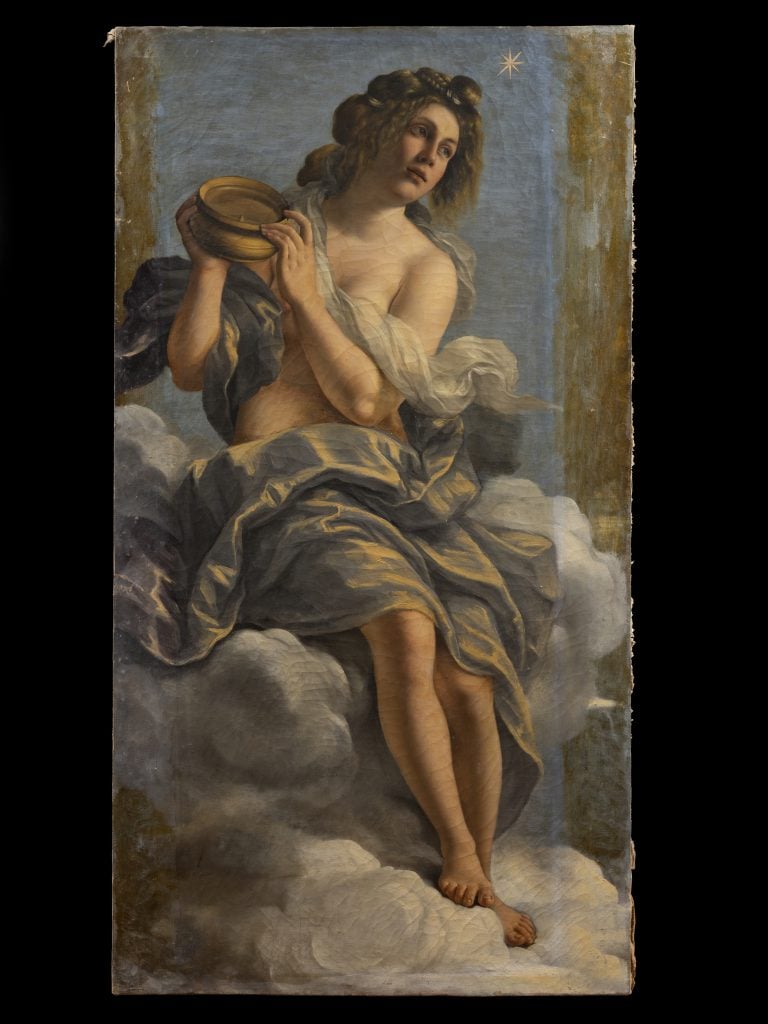Art World
Art Bites: Gentileschi and Galileo Were Pen Pals
The artist's relationship with the scientist may have informed her depiction of blood.

Some of the world’s greatest artists and thinkers have turned to each other for guidance and inspiration: Salvador Dalí and Sigmund Freud, Langston Hughes and Zora Neale Hurston, Paul Cézanne and Émile Zola. But did you know that the painter Artemisia Gentileschi was pen pals with the astronomer Galileo Galilei? The pair wrote back and forth, and in one famous letter in 1635, the artist asked the astronomer to speak kindly about her work to Duke Ferdinando Il de’ Medici—the Grand Duke of Tuscany—as he had done in 1620.

Artemisia Gentileschi, Judith Slaying Holofernes (ca. 1614–20). Courtesy of the National Museum of Capodimonte, Naples.
Gentileschi, the daughter of the artist Orazio Gentileschi, was one of the 17th century’s most important painters, far surpassing the reputation of her father. She was the first woman ever to be admitted to the Academy of Design in Florence and also trained in her father’s studio. In 1611, Gentileschi was raped by her father’s assistant Agostino Tassi, and was subjected to a humiliating and invasive trial which saw Tassi sentenced to a year in prison and exile. Her painting Judith Beheading Holofernes (ca. 1614–20) is seen as Gentileschi’s “revenge piece”, with the artist herself in the role of Judith doing the graphic beheading of the Assyrian general.
Galileo was nearly 30 years Gentileschi’s elder, and is celebrated as the world’s first modern scientist. He invented his own telescope, astrolabe, compass, and a precursor to the thermometer. He made key discoveries about space including Jupiter’s four largest moons, the phases of Venus, and a breakthrough about the Milky Way.
The pair met in Florence while Galileo was working on his book Two New Sciences (1638), which discusses kinematics and the strength of materials, and they began exchanging letters. Gentileschi sought Galileo’s advice for her second version of Judith Beheading Holofernes, and Galileo’s research on the parabolic law of projectiles—which would only be published almost two decades later—may well have impacted the way that Holofernes’ blood spurts from his neck in an arc in the later version of the painting. In the first version, it runs down his neck onto the bedsheets.

Artemisia Gentileschi, Allegory of Inclination (1615-16). Photo by Olga Makarova. Courtesy of the Casa Buonarroti, Florence.
Galileo’s research shared what happens to cannonballs when fired, but the same physical laws could be applied to flying liquids. As defended by historians David Topper and Cynthia Gillis in their 1996 paper Trajectories of Blood: Artemisia Gentileschi and Galileo’s Parabolic Path, and unless Gentileschi witnessed a real beheading for inspiration, it seems likely that Galileo was one of her key resources for making the second version of the painting more scientifically accurate.
When they first met, Galileo was the court mathematician and philosopher to the Grand Duke Cosimo II. It was the duke who commissioned Gentileschi to create the replica of Judith, and Topper and Gillis explain that “when Artemisia received the commission from Cosimo II […] she drew on Galileo’s discovery for a realistic depiction of the splattering blood”.
Gentileschi’s Allegory of Inclination (1615) is also thought to include a nod to the pair’s friendship. The painting’s nude figure holding a compass, which Galileo had invented a few decades earlier and which may also reference his research into magnetism, and the bright star in the sky is painted in a similar style to the way Galileo depicted stars in his 1610 paper The Starry Messenger, the very first published paper of observations made through a telescope.
What’s the deal with Leonardo’s harpsichord-viola? Why were Impressionists obsessed with the color purple? Art Bites brings you a surprising fact, lesser-known anecdote, or curious event from art history. These delightful nuggets shed light on the lives of famed artists and decode their practices, while adding new layers of intrigue to celebrated masterpieces.





